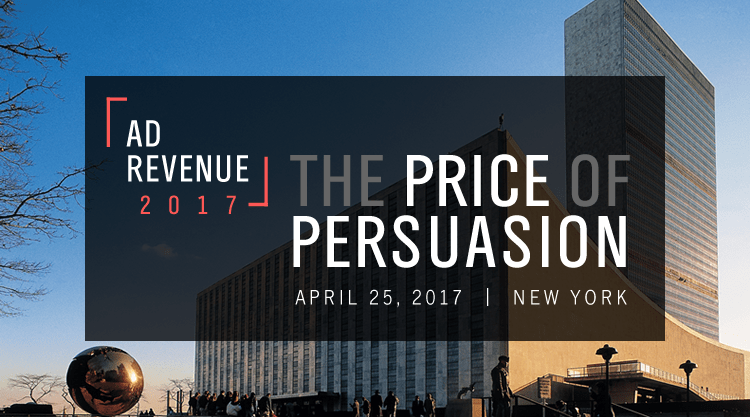Although the pace of innovation and change in digital media generally makes every year exciting, 2016 stands out as one in which the material shifts in strategy taking place may ultimately shape winners and losers.
As the automation solutions company for an open digital media industry, PubMatic’s revenue management platform for publishers and enterprise-grade programmatic tools for buyers play a critical role in the continued advancement and growth of the industry we serve. It’s more apparent now, ten years after our company was founded, that our industry needs the independence and leadership in innovation that sets PubMatic apart.
So, after spending significant time traveling to our various global offices to meet with customers, industry peers and members of our own team, four clear trends emerged that I believe are shaping the ecosystem and informing the way we move into 2017. I hope they will help you generate more engaging conversations when speaking with customers and each other.
The Industry Today
As in years past, the ad tech landscape shifted a great deal during 2016—a trend we expect to accelerate as we head into 2017.
- The threat of the duopoly is real and could reach a tipping point. As Google and Facebook continue to dominate, they make it incredibly hard for all other players in the ecosystem to compete. Attempts to reduce dependency on these two are happening all around the globe, albeit very slowly. The imbalance is so obvious that either or both of these companies could begin to explore ways to improve their commercial terms with partners who are actively lookingfor alternatives outside of the duopoly. The environment is poised for to change, and “best in class” monetization technologies like PubMatic stand out as smart strategic options.
- A clear third major player could emerge in 2017. The choices are growing from Verizon/AOL/Yahoo to companies like Amazon, or even Snapchat parent Snap, Inc., which recently announced a major shift from its sole focus on software to hardware with the impending launch of its $130 USD Spectacles. There is a pursuit for the next largest share of digital advertising spending as even more brand dollars shift online and increasingly programmatic. M&A activity will also play a part of this competition for share of dollars as fewer players will have the profitability and scale to remain self-sufficient.
The Publisher Side
We are witness to a number of changes in the way publishers approach control and management of advertising decisions on their properties, and the resulting impact on their monetization strategy. They include, but are not limited to:
- First-party data strategies will be key to long-term publisher success. Following the spending boom around the Olympics and US Presidential election that provided large monetization opportunities for publishers (particularly in the US), future success will rely on their ability to find new ways to make their first-party data a strong source of enrichment for their impressions. The publishers that figure this out sooner than later will continue to stay ahead.
- Ad decisioning, PMP and programmatic direct will see even greater adoption. Publishers are now leading with these conversations, and are working diligently to understand which technology partners can deliver what they need. Brand advertising is the carrot driving the urgency and desire to do more as publishers see the benefits of header bidding and wrapper solutions in regaining control over ad decisioning.
- More publishers will implement internal reorgs to respond to market changes. Heading into 2017, traditional publishers are making adjustments to manage costs and complexity in go-to-market—both Hearst and Time Inc made announcements in 2016 about moving away from siloed sales teams and collapsing the publisher titled roles into central selling organizations with vertical focuses. As part of this process, many are also culling down the size of their sales teams and putting greater emphasis on programmatic execution.
The Buy Side
As we continue to innovate on behalf of publishers, it’s imperative that we also spend time listening to and working with media buyers. Based on those conversations, we see the following trends emerging:
- The days of traditional I/Os may be numbered. Programmatic guaranteed (in its various forms) is the leading conversation on the buy side. Google’s latest announcement is just the first of many we expect to see over the next few months describing the benefits and efficiencies brand advertisers can gain by making buying commitments that rely/utilize data-driven and programmatic technology.
- Some brand marketers will build out internal programmatic buying competencies. Scale marketers are beginning to pull programmatic spending in-house and allocating a greater share of spending to programmatic. The heavy concentration of spending on Facebook and Google, combined with an increased ability to plug directly into aggregated inventory supply through header/wrapper integrations, will bolster confidence in the resulting cost savings and low performance impact risk. Disney and P&G are just two of the brands moving in this direction thus far. Agencies are spending equal time to respond, and making data a big part of their counter strategy.
- Measurement and full campaign attribution will return to the forefront of conversations. Marketers will demand better solutions for multi-touch attribution across screens, channels and formats. Being able to increase confidence that direct bought campaigns are delivering against metrics will be a game changer, especially if the solution manages to close the loop between online and offline attribution, cross-screen and cross-platform consumer touch points, and other major marketer pain points.
Mobile Trends
Another key area where we expect to see continued growth and adoption is in mobile. Our recently released Q3 2016 Quarterly Mobile Index highlights trends that we feel will accelerate into 2017:
- Mobile PMPs continue to grow in popularity among premium publishers and advertisers. As of Q3 2016, mobile web PMP inventory value exceeded the mobile average by nearly 200 percent, reflecting the continued shift of brand dollars to programmatic. For brand marketers, the transparency and inventory quality provided by PMPs offer a safer way to access targeted inventory packages at scale.
- Publishers worldwide are benefitting from cross-screen header bidding. Header bidding is eclipsing the traditional waterfall, and publishers worldwide are flocking to it as a way to maximize yield from both mobile impressions and desktop. When publishers make their mobile impressions available via header bidding, advertisers in turn have greater visibility into the bid landscape and more opportunities to win an auction for mobile consumers.
- Mobile web will continue to provide opportunities for publishers. Although mobile app inventory share did increase globally as of Q3 2016, mobile web monetization continues to provide the largest opportunities for premium publishers. Advertisers and publishers need to balance their mobile strategies to leverage the growing popularity of mobile apps while maximizing the monetization opportunity of mobile web. Big budget brand advertisers value the quality and premium environments offered by mobile web, and we wouldn’t be surprised to see more publishers making their mobile web inventory increasingly attractive to buyers.
Although this list of 2016 trends is not exhaustive, we feel that the four outlined above had the greatest impact on the media and advertising ecosystem during the past 12 months. Similarly, these are four of the trends that we believe will continue to influence the industry as we move into 2017 and beyond.




